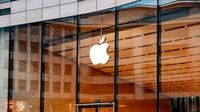Apple Inc. has released its financial results for the first quarter of 2025, showcasing a performance that exceeded expectations in terms of earnings per share (EPS) and revenue. The tech giant reported an EPS of $1.65, surpassing the forecast of $1.61, and total revenue of $95.36 billion, which also exceeded the anticipated $94.22 billion. Despite these positive results, Apple’s stock fell by 3.91% in after-hours trading, closing at $204.97 on May 1, 2025.
Key insights from the report indicate that Apple outperformed EPS and revenue forecasts for Q1 2025. The company’s service revenue reached a record high of $26.6 billion. Additionally, Apple announced significant investment plans in the United States and introduced the iPhone 16e along with a new MacBook Air.
In terms of overall performance, Apple demonstrated a robust showing in the first quarter of 2025, with total revenue increasing by 5% year-over-year and diluted EPS rising by 8%. The company achieved a gross margin of 47.1% and reported a net income of $24.8 billion, alongside an operating cash flow of $24 billion.
Apples EPS of $1.65 for Q1 2025 marked a positive surprise of about 2.5% over the forecast, while the revenue of $95.36 billion exceeded expectations by more than $1 billion. This consistent trend of surpassing market forecasts reflects Apple’s operational efficiency and strong market presence.
Despite the growth in earnings, the market reacted negatively, with Apple’s stock dropping by 3.91% in after-hours trading. Analysts speculate that this decline may stem from investor concerns regarding future growth prospects and potential challenges in key markets. The stock remains within its 52-week range, which has seen a high of $260.1 and a low of $169.21, indicating ongoing volatility in market sentiment.
Looking ahead, Apple expects revenue growth in the low to mid-single digits for the upcoming quarter until June, with a gross margin projected between 45.5% and 46.5%. The company anticipates tariff impacts of $900 million and remains focused on enhancing its AI capabilities, with a strong emphasis on privacy.
During the earnings call, Tim Cook, Apple’s CEO, emphasized the company’s commitment to innovation, stating, "We are more committed than ever to the innovation and ingenuity that will enrich the lives of our customers." He highlighted the introduction of the iPhone 16e and powerful new Macs and iPads that leverage Apple Silicon's exceptional capabilities.
Kevin Parekh, CFO, noted that Apple has "well over 1 billion paid subscriptions on our service platform," underscoring the strength of the company’s service division. However, he also acknowledged challenges, stating that ongoing supply chain diversification and tariff-related costs could impact profitability. Furthermore, market saturation in key regions like China poses growth challenges, and macroeconomic pressures may affect consumer spending and demand.
In China, Apple reported a decrease in revenue from $16.37 billion to $16.00 billion year-over-year, falling short of expectations of $16.83 billion. This decline highlights the increasing competition Apple faces from local rivals like Huawei and a weakening consumer demand in the region.
Despite these challenges, Apple announced a substantial share buyback program exceeding $100 billion and raised its quarterly dividend from $0.25 to $0.26. These moves are intended to reassure investors, though the stock still reacted with a decline of 1.9% in after-hours trading.
Apple’s revenues from products saw a year-over-year increase from $66.89 billion to $68.71 billion, while service revenues rose from $23.87 billion to $26.65 billion. iPhone sales increased from $45.96 billion in the previous year’s quarter to $46.84 billion, exceeding analyst expectations.
Analysts had anticipated a more significant dip in Apple’s earnings given the market conditions, but the company’s ability to maintain its revenue streams and introduce new products has provided a buffer against potential downturns. However, the mixed results in the wearables segment, which saw a revenue decline of 4.9% year-over-year, and the service revenue, which, despite growth, fell slightly short of expectations, have raised questions about Apple’s overall growth trajectory.
As Apple navigates these complexities, the company remains a quality stock with strong pricing power and a loyal customer base. However, the momentum appears to be waning, as evidenced by the challenges in China, disappointing wearables sales, and dwindling cash reserves, which shrank by 14% to $28.16 billion. Short-term liabilities surged by 17% to $144.57 billion, further complicating the financial landscape for the tech giant.
In summary, while Apple’s financial performance for Q1 2025 showcased some impressive metrics, the company faces significant hurdles moving forward. The market's reaction reflects a cautious sentiment among investors, who are closely monitoring Apple's ability to sustain growth amidst increasing competition and economic pressures.





